Here is some more Space Elevator miscellany, gleaned from the web over the past several weeks…
The website Next Big Future always has interesting posts and I subscribed to it long ago. This is a posting from this site from last January, talking about Alan Windle’s carbon nanotube ribbons. According to the article, he has created something which has been measured at 9GPa. If true, I sure hope he brings it to this year’s Strong Tether competition (being held at the Space Elevator Conference) – he would be a favorite to win.
This is an article, in French, about the Space Elevator Games and Space elevators, in general. If you parlez the Francais (sorry for my slaughtered translation), enjoy…
And then we have another article about a Space Elevator, this time in Vietnamese…
 One of my favorite sites, io9, has a posting about a new book with a Space Elevator as a backdrop, The Third Claw of God. This is the second in the series of Andrea Cort novels and io9’s review of the book says its a winner. I suppose you can find it at your local bookstore, and it’s available in paperback from Amazon for $7.99. It’s also available for Kindle and, as I’m lucky to have one, I’ve just downloaded it – I’ll start it on the plane-ride out to California next week. When I’ve finished reading it, I’ll post a review.
One of my favorite sites, io9, has a posting about a new book with a Space Elevator as a backdrop, The Third Claw of God. This is the second in the series of Andrea Cort novels and io9’s review of the book says its a winner. I suppose you can find it at your local bookstore, and it’s available in paperback from Amazon for $7.99. It’s also available for Kindle and, as I’m lucky to have one, I’ve just downloaded it – I’ll start it on the plane-ride out to California next week. When I’ve finished reading it, I’ll post a review.
.
In a recent speech to the Rensselaer Polytechnic Institute class of 2009, Futurist Peter Schwartz spoke of “…ten areas to make a Global Impact, find success” to help create a peaceful, prosperous world by the year 2050. “The final item on Schwartz’s list is discovering new ways to radically lower the cost and environmental impact of space flight, and developing new ways, such as a space elevator, to get into space.” I can only say “Amen” to that…
James Coughtrey has created an alternative world scenario entitled “Vast Worlds“. It’s driven by humans acquiring technology from a derelict alien starship. In this scenario;
The Chinese space elevator was the only one that was actually on the equator. Both the Commonwealth and AMA have theirs off centre for economic reasons. New Inca’s is placed further south to avoid American airspace, America doesn’t cross the equator and Russia doesn’t actually have a space elevator but an assisted floater rocket system.
I haven’t had a chance to review all of this, but it looks quite interesting…
Dave Barry recently opined on the Space Elevator here – most of his jokes about the elevator are a bit dated.
This is an interesting blog post concerning Space Based Solar Power. A constituent attended a congressional briefing by Mark Kirk (he represents the district next to mine) and asked him about his views on SBSP. Congressman Kirk identified one of the issues preventing the widespread use of it; i.e. the cost to orbit. The writer states that we should look at this issue in light of; “…the mass required to produce a kilowatt of electricity (kg/kw) and the total system cost to produce a kilowatt of electricity (cost/kw)“. I think this is correct, but alas, the writer didn’t supply his opinion of what this number should be. I’ve written before about my skepticism about the practicality of SBSP and gave my numbers here.
A related article about Pacific Gas & Electric (PG&E) purchasing electricity created by SBSP is here. Two companies are mentioned, Solaren and Space Energy. As I’ve said before, I’m skeptical if this idea can work – it’s a lot easier to make a website than it is to generate SBSP cost-effectively. I have no issues with the technology – I have serious doubts if we can generate enough electricity (we use so much of it) via SBSP to every make it worthwhile. But if you believe that the idea of SBSP is a good one, I think you absolutely have to support the idea of a Space Elevator – no other technology gives you a chance to get enought stuff into orbit, cost-effectively enough, to perhaps make this idea work.
No, I still haven’t seen the new Star Trek movie, but I’m very interested in seeing the Vulcan Space Elevator made of “…of metallic chunks the size of refrigerators.” Maybe after the Space Elevator Conference is over…
 If you’ve ever wondered what would happen if you dropped balls (or other heavy weights) from a Space Elevator, here’s a discussion thread on the question.
If you’ve ever wondered what would happen if you dropped balls (or other heavy weights) from a Space Elevator, here’s a discussion thread on the question.
Enough for now – time to get ready to head out to NASA-Dryden for Round 2 of testing for the upcoming Space Elevator Games…
(Picture thumbnail of Galileo and his balls from here – click on it for a larger version).

 Once again, all together now;
Once again, all together now;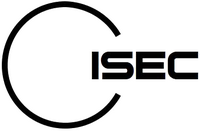 The creation of the
The creation of the  Attending and blogging on the
Attending and blogging on the  Watching the traffic at this site continue to grow. This post is number 1,172 for this blog so I’m averaging nearly 400 posts per year. In it’s first year, the Space Elevator blog had approximately 28,000 hits. In it’s second year, this blog had about 68,000 hits. In this third year, we’ve had nearly 80,000 hits. While the growth rate looks like it has slowed, this is actually not the case – the average daily traffic has increased significantly. In the blog’s first and second years, traffic spiked during my coverage of the Space Elevator Games. I put up many posts during the Games and nearly 40% of the website hits in year 1 and year 2 were generated during that 10-12 day period. Even though there were no Space Elevator Games in this past 12 months, traffic at this site still increased over 15%. I fully expect our traffic numbers to double in the coming year with a) coverage of the Space Elevator games and b) coverage of the activity by the International Space Elevator Consortium (ISEC).
Watching the traffic at this site continue to grow. This post is number 1,172 for this blog so I’m averaging nearly 400 posts per year. In it’s first year, the Space Elevator blog had approximately 28,000 hits. In it’s second year, this blog had about 68,000 hits. In this third year, we’ve had nearly 80,000 hits. While the growth rate looks like it has slowed, this is actually not the case – the average daily traffic has increased significantly. In the blog’s first and second years, traffic spiked during my coverage of the Space Elevator Games. I put up many posts during the Games and nearly 40% of the website hits in year 1 and year 2 were generated during that 10-12 day period. Even though there were no Space Elevator Games in this past 12 months, traffic at this site still increased over 15%. I fully expect our traffic numbers to double in the coming year with a) coverage of the Space Elevator games and b) coverage of the activity by the International Space Elevator Consortium (ISEC). Watching the preparations for the next
Watching the preparations for the next  The release of a paper by Ben Shelef, CEO of the
The release of a paper by Ben Shelef, CEO of the 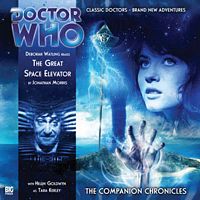 Other highlights occuring the past year the announcement of the first
Other highlights occuring the past year the announcement of the first 
 On the Liftport blog, Michael Laine put up a post detailing (in a very abbreviated fashion) his adventures (to date) with trying to get a Space Elevator built. This post;
On the Liftport blog, Michael Laine put up a post detailing (in a very abbreviated fashion) his adventures (to date) with trying to get a Space Elevator built. This post;  There have been several news reports recently (a few of them are
There have been several news reports recently (a few of them are 
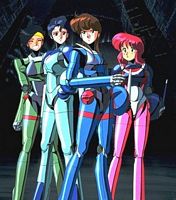
 Several days ago, I was interviewed by Jon Udell, he of the
Several days ago, I was interviewed by Jon Udell, he of the  Those of you who attended the recent
Those of you who attended the recent  A
A  A few days ago, I
A few days ago, I  All,
All, In March of 2006, economist and writer/blogger
In March of 2006, economist and writer/blogger 

 Since the competition, LaserMotive has put up a number of posts on their blog. These cover everything from who some of their sponsors / suppliers were, to qualifying videos to problems with their brakes, etc. Rather than trying to summarize each one, just go visit their blog,
Since the competition, LaserMotive has put up a number of posts on their blog. These cover everything from who some of their sponsors / suppliers were, to qualifying videos to problems with their brakes, etc. Rather than trying to summarize each one, just go visit their blog, 

 That was my question when I read the
That was my question when I read the  The
The 
 In this
In this  Over a dozen posts have been put up on the LiftPort blog in the past few days. Rather than summarize each one of them, I recommend that you just link over to the most recent post (
Over a dozen posts have been put up on the LiftPort blog in the past few days. Rather than summarize each one of them, I recommend that you just link over to the most recent post ( In a related article, “
In a related article, “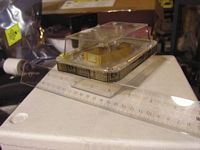

 One of my favorite blogs is
One of my favorite blogs is  A “Future History”
A “Future History” 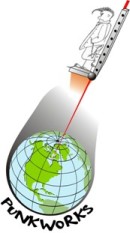


 I’d love to go to this symposium, but don’t think I can. From the symposium program, it appears that Dr. Edwards is scheduled to speak from 8:30-9:15am on Thursday, June 7th. Let’s hope Dr. Edwards will make the details of this proposal available soon to all of us. This is the kind of project which the entire space community can and should get behind. Not only would it be beneficial for Lunar colonization, but for Martian colonization as well. And once a Space Elevator (or two) is in place, it changes the entire ballgame regarding space exploration.
I’d love to go to this symposium, but don’t think I can. From the symposium program, it appears that Dr. Edwards is scheduled to speak from 8:30-9:15am on Thursday, June 7th. Let’s hope Dr. Edwards will make the details of this proposal available soon to all of us. This is the kind of project which the entire space community can and should get behind. Not only would it be beneficial for Lunar colonization, but for Martian colonization as well. And once a Space Elevator (or two) is in place, it changes the entire ballgame regarding space exploration. In the same posting, the Space Elevator Reference also discusses the upcoming German Space Elevator Games, also to be held in 2008. It’s not clear from the posting whether or not they will be held in conjunction with the Conference, but looking at the logo, I would guess “yes”. Thanks to a tip from Team Zero G’s Arthur Shay, I reported in early March about these same Games. You can read that post
In the same posting, the Space Elevator Reference also discusses the upcoming German Space Elevator Games, also to be held in 2008. It’s not clear from the posting whether or not they will be held in conjunction with the Conference, but looking at the logo, I would guess “yes”. Thanks to a tip from Team Zero G’s Arthur Shay, I reported in early March about these same Games. You can read that post  During the recent SESI 2007 Conference, Brad Edwards announced that a new European organization,
During the recent SESI 2007 Conference, Brad Edwards announced that a new European organization,  Michael Laine is now trying to build up LiftPort’s presence in cyber-space. He talks about this effort on the LiftPort blog
Michael Laine is now trying to build up LiftPort’s presence in cyber-space. He talks about this effort on the LiftPort blog